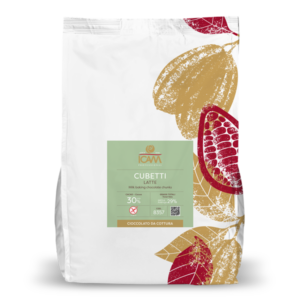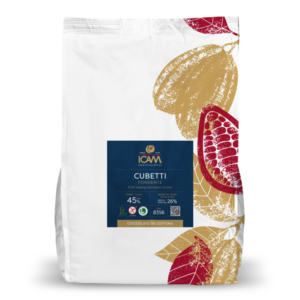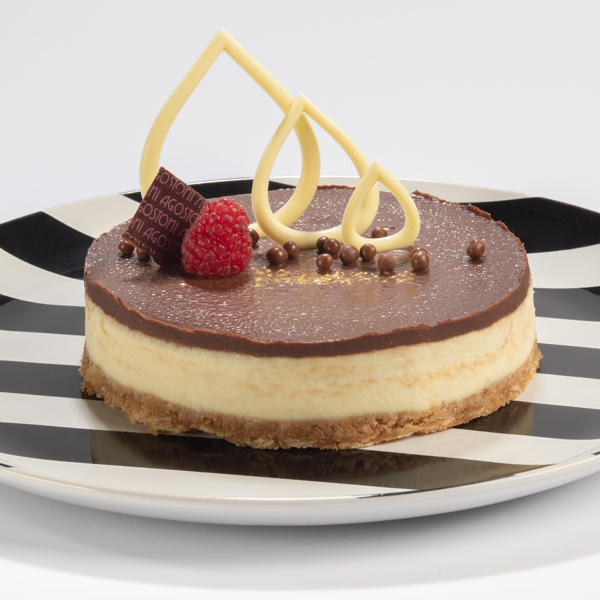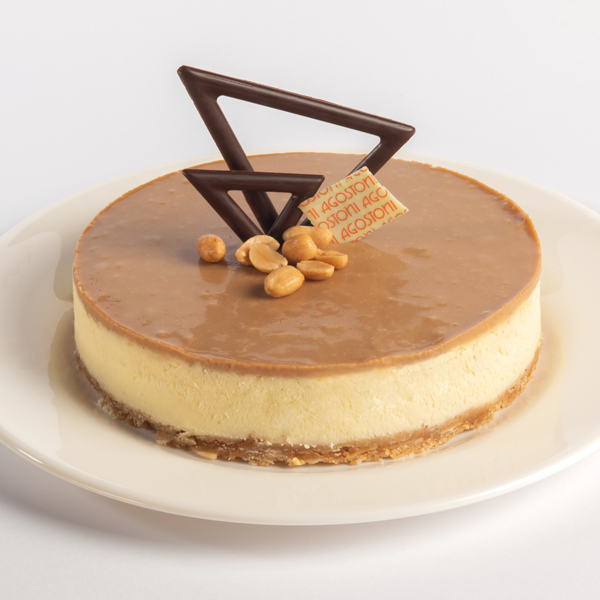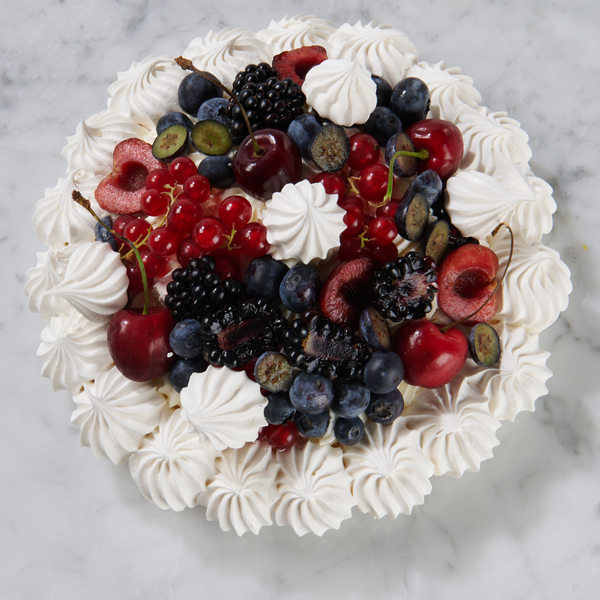
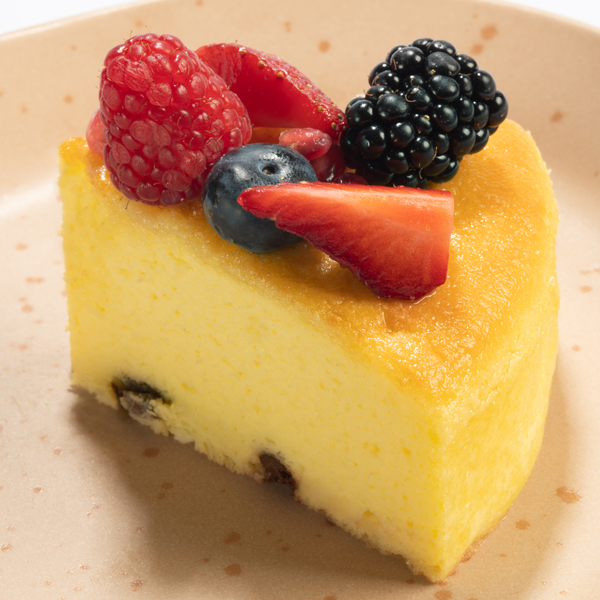
| 160 g | Cream cheese |
| 20 g | Butter cream |
| 50 g | Milk |
| 40 g | Weak flour |
| 80 g | Egg Yolks |
| 160 g | Egg Whites |
| 80 g | Sugar |
| 25 g | White Chocolate Chunks |
| 25 g | Milk Chocolate Chunks |
| 25 g | Dark Chocolate Chunks |
Heat the cheese slightly in order to be able to mix it with the butter and then carefully add the milk. Combine the sieved flour and yolks, continuing to mix at a medium speed. Whisk up the egg whites with the sugar and amalgamate it with the mixture. Leave in the fridge for two hours to allow the mixture to stabilise and avoid the chocolate cubes sinking to the bottom. Finally add the chocolate cubes.
Grease a 15cm tall cake tin and add some baking paper, then pour in the mixture. Submerge one third of the tin in hot water.
The cook will take place via bain marie in two steps; 20 minutes at 160°C and then another 60 minutes at a temperature of between 110°C and 100°C. Chill, and decorate with fresh fruit and shavings of white chocolate.
Cheesecake
- Cooked in bain marie to provide a homogeneous and constant cook.
- Use of a cake tin with a closed base.
- Don’t incorporate too much air whilst preparing the mixture to prevent it expanding too much during the cooking process.
- This would add the risk of the dessert collapsing upon itself during the cooling process.
- Place some baking paper around the edges of the cake tin to make the removal of the dessert easier.
- Further cooking should take place in the oven at a low temperature; anything over 110°C would damage the structure of the dessert.
Cold Cheesecake
- When making the meringue, the cooked sugar should be added to the egg whites as soon as they have been whisked to around 70% of their structure, otherwise the egg whites could become grainy.
- When using pectin in raspberry jelly, premix it with sugar, and add it to the pulp when it reaches a temperature of 40°C to avoid clumps of pectin forming. The jelly shouldn’t be too hot, 40°C at the most. To understand when the correct density of jelly has been reached, place a drop onto the work surface. If the droplet remains spherical then it’s ready.
- In the strawberry gelatine (this fruit is sensitive to heat), it is preferable to use sheets of animal-based gelatine for thickening, because if the temperature exceeds 40°C then we’ll have the sensation of cooked fruit and the colour becomes darker.
- The creamy cheese must be used at a temperature of around 27/28°C, otherwise clumps could form when adding the gelatine.
- When we use animal-based gelatine, in order to achieve a standard level of rehydration it is necessary to consider that 1g of gelatine absorbs 5g of water (five times its weight).
- The choc-ice version was made by using a semifreddo instead of a mousse in order to make it as similar to a cheesecake ice cream as possible.
- In the mousse version, we added a stabiliser (animal-based gelatine) that allows it to keep its structure in temperatures above zero. There is no stabiliser in the ice cream version, so consumption should take place while its temperature is still below zero.


